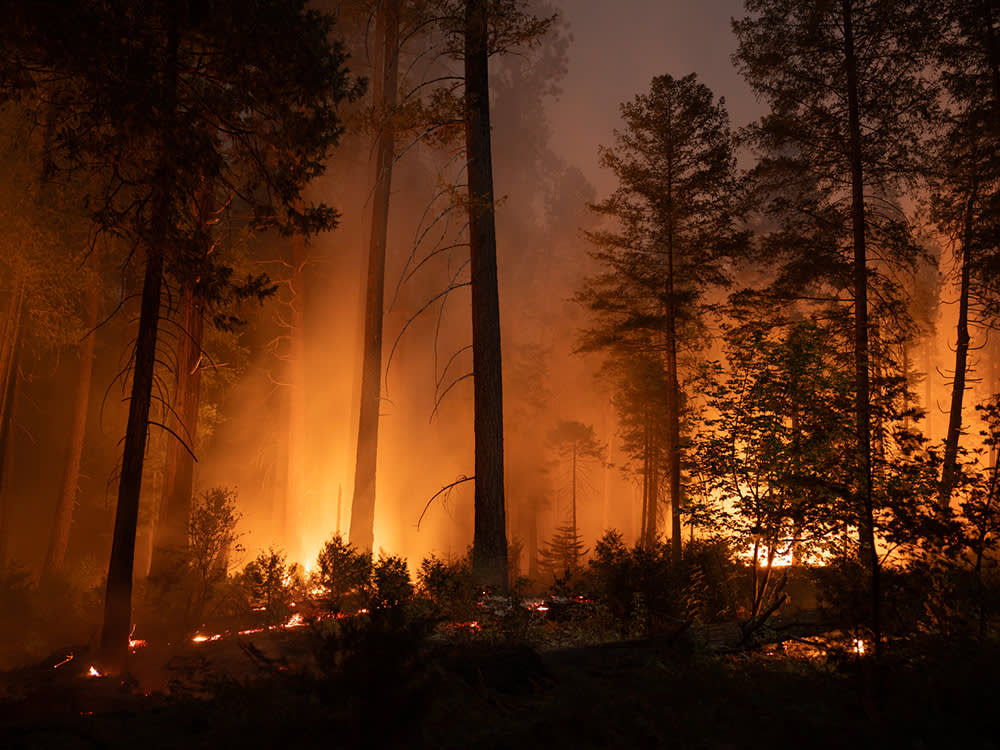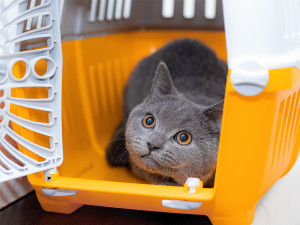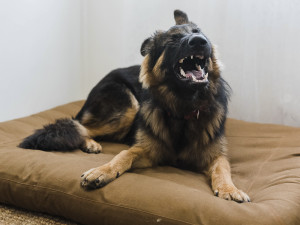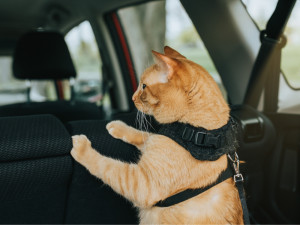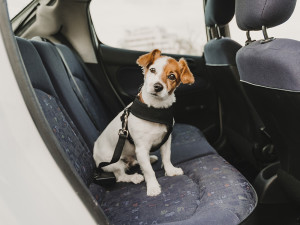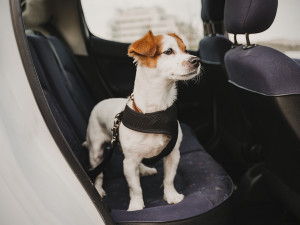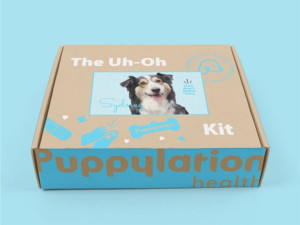Fires Are Devastating LA. Here’s How to Keep Your Pet Safe
What you need to know if wildfires affect your community.
Los Angeles is experiencing what LA County Fire Captain Sheila Kelliher told NBC Newsopens in new tab is “one of the worst” she’s seen in 25 years, forcing 180,000 people to evacuate their homesopens in new tab. Three of the biggest fires — the Palisades Fire, the Eaton Fire, and the Hurst Fire — have burned 33,700 acres, per the California Department of Forestry and Fire Protectionopens in new tab. As of Thursday night, there have been 10 fire-related deaths reported.
Naturally, LA residents are scrambling to find safe places they can take their pets as they evacuate (or ideally, ways they can safely evacuate with them). Although this particular disaster is happening in Southern California, wildfires have been a risk across the country in recent months.
Last October, New York City’s Central Park received the smallest amount of rain ever recordedopens in new tab in its almost 200-year history. In a 10-day span, the dry conditions caused 120 fires — including one in Brooklyn’s iconic Prospect Park, which rapidly burned two acres. At the same time, elsewhere in New York state, a massive fire spread from New Jersey to the Hudson Valley, unfurling over 420 acres of land and taking the life of a firefighter.opens in new tab As a result, the air quality in various New York counties spiked to unhealthy levelsopens in new tab, with officials warning sensitive groups to avoid outdoor exposure.
When natural disasters like this strike, the first thought on a pet parent’s mind is, What do I do to protect my pets?
How much do you spend on your pet per year?
Unfortunately, this is a question that you might have to be asking a lot more throughout the year. Just a couple of decades ago, wildfire season spanned four months, from late summer to early fall. It took place primarily in Western states, such as California and Oregon. But (no) thanks to the worsening effects of climate change, the very idea of a “wildfire season” could soon be overtaken by the “fire year,” according to the USDA Forest Serviceopens in new tab. And as we’ve seen, even Eastern states are at risk. So, here’s how to be prepared for a wildfire (and the resulting smoke).
Sign up for alerts.
First and foremost, sign up for emergency alerts. “There are guidelines set by the county or state for your area in terms of what your alert status might be,” says veterinarian Dr. John Iovino, who is based in Oregon.
There are several ways that you can do this. The FEMA appopens in new tab gives real-time updates from the National Weather Service. Find your local emergency-alert system by typing your town, city, or county’s name and “alerts” into a search engine. If you live in a hotspot for blazes, then you might be able to sign up for an alert just for wildfires. Watch for any orders to evacuate. “It’s important to pay attention to that so you have an idea of when to act and have an emergency bag in case you need to evacuate,” Dr. Iovino adds.
If you can, place a pet-rescue alert sticker on your door or front window, somewhere visible to rescue workers in the event that you’re unable to get your pets out of the house. The American Society for the Prevention of Cruelty to Animals (ASPCA) will send you one for freeopens in new tab. Ensuring that your pet is microchipped could help reunite you in the event that you’re separated during a disaster.
Develop an escape plan.
Realistically, you should be prepared for wildfires long before one threatens your home. Make sure everyone in your home knows the escape plan and keep an emergency kit in a location that everyone knows. (You can find more emergency preparedness tips from the federal government’s Ready campaignopens in new tab.) You’re going to want to think on the fly as little as possible, especially if your stressed-out self is also in charge of some even-more-stressed-out animals.
Pet parents should have a separate plan for their animals. Decide who will be responsible for seeing them to safety in case of an evacuation and have an emergency kit at the ready. Whoever takes charge here should know all of their pets’ secret hiding places.
Pack a pet emergency kit.
Just like your own go-bag, your pet’s emergency kit should be packed with necessities and should be stored close to the door that you plan to use as your main escape route:
Between three to seven days’ worth of foodopens in new tab (rotate every two months)
At least a week’s worth of bottled water per pet (replace every two months)
Treats
Pet first-aid kit
Medication
Can opener for wet food
Toys and blankets, if possible
Know where you can stay.
You should have a general idea of where your pet is going to stay and have several backup plans. Research the local hotels and emergency shelters so you know which ones are pet-friendly. Ask your local animal shelter if they provide emergency foster care or boarding. If you have friends and family outside of the immediate area, ask if they could pet-sit for you while things calm down.
Keep an eye on air quality and your pets’ breathing.
Even if you don’t have to evacuate, you should pay attention to the air quality alerts in your area. One of the many unfortunate side-effects of a wildfire is smoke, which can lead to eye and respiratory tract infections in both humans and animals as well as more serious conditions, such as reduced lung function or premature death. So, sign up for alerts via AirNowopens in new tab, or use the local equivalent.
If the alert system is telling you to stay inside, then your pet should, too. Shut all of the windows and if you have an air conditioner, run it to help filter out ash and particle matter that might have gotten into your home. Keep your pet’s walk short and wipe them down as soon as they’re indoors again, paying special mind to their nose and eyes.
Keep an eye on your dog for signs of any respiratory stress or eye irritation. There are such things as canine air pollution masksopens in new tab, which go over your dog’s muzzle and are meant to filter out ash. But unless you train your dog from a very young age, they’ll most likely try to remove the mask, especially during a stressful situation. “Save them for extreme situations only, where humans would also put on a mask,” Dr. Iovino says.
Puppies, senior pups, dogs with asthma, and brachycephalic breeds, such as Pugs, Boxers, and Shih Tzus have a bigger risk of being affected by smoke inhalation. Get in touch with your vet if your animals exhibit any of the following signs:
Difficulty breathing (including increased noise when breathing and open-mouthed breathing)
Inflammation of the throat or mouth
Eye irritation, very watery eyes
Asthma-like symptoms
Fatigue
Reduced appetite or thirst
Disorientation
“If you can, check your cat or dog’s tongue or gums. They should usually be pink, which is a sign that they’re getting enough air,” Dr. Iovino says. If you see blue or purple, you should seek help for your pet immediately.
The bottom line: be prepared.
The news that wildfires are getting worse is stressful, but knowing how to keep your pet safe ahead of time can bring peace of mind. The best thing that you can do for yourself and your pets is to be prepared for an emergency.
